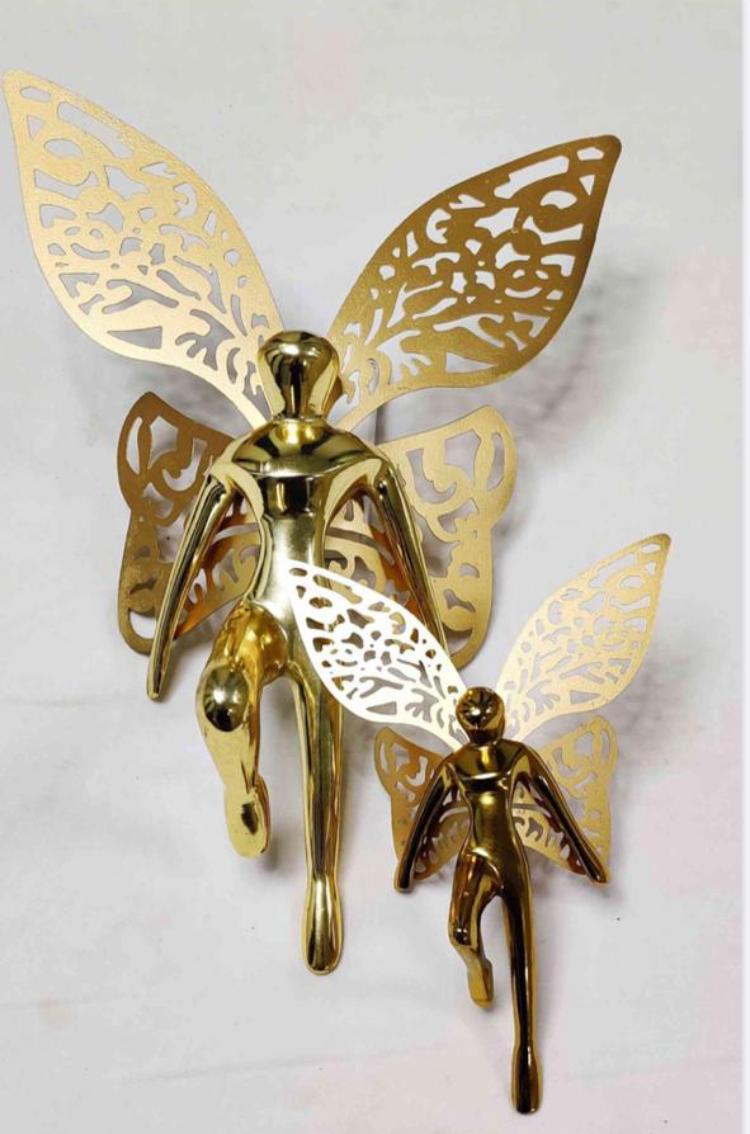The Folk Art of Madhubani....
Madhubani Art (or Mithila painting) is a style of Indian and Nepalese painting, practiced in the Mithila region of India and Nepal. It finds its origin in the Madhubani District of Bihar, India. Madhubani comes under Darbhanga Division and is situated 26 km northeast of Darbhanga City, in Bihar. The word "Madhuban" means "forest of honey", but sometimes it is also known as "madhu"+"vaani" meaning "sweet" "voice/language".
Mithila paintings which are famous all over the world, are created mostly by women of this region, using natural colours and paintings are done on canvases, walls, floors of sacred places, etc. The paintings are brightly coloured with a mix of several hues, along with a white border to all lines which is a major technique used. It is believed that this art form originated when Lord Janak asked the villagers to decorate the village to celebrate the wedding of Rama Ji and Sita Ji. The art usually consists of scenes from the Ramayana or depicts Lord Krishna with Gopis.
On religious and social occasions like vratas, the women decorate the walls with lively artwork which captivates the mind and soul of the onlooker. Mithila painting is categorised under folk art. The artists paint on walls, canvas and on the floor; bhitti, pata and aripana respectively.
Aripanas relating to worship of different Gods and Goddesses are made during different pujas and rituals. The art of aripana or drawings on the floor is a legacy, handed down through generations. They are made in the courtyard, at entrance of the house among other places. Aripanas are traditionally made with a mix of rice powder and water called pithara. The colours red, green, yellow and black are also used along with vermillion(sindoora). Various deities of Hinduism like Shiva-Parvati, Radha-Krishna, Vishnu-Lakshmi are depicted.
The wall surfaces are prepared by plastering with cow dung or first white-washed on which paintings are made. The paints were previously prepared but now they are procured from villages from the market town of Madhubani, Purnea with the supply coming from Kolkata. The colours used are gulabi, nila, sindura, sugapankhi (green). Originally black was made from burnt barley seeds, yellow from turmeric, or chuna (lime) mixed with milk from banyan leaf, orange from palash flower, red from the juice of the kusuma flower and green from bel leaves. Paintings of the Kayastha families have brown, yellow-ochre, turmeric and myrobalan (harada), madder red and black colours which are bought in modern times, mixed with goats milk. White colour can be got by mixing of rice powder in water. Colours used to create black is from soot, light brown is derived by mixing cow-dung and gum in fresh water. Pipal bark yields pink when dried and boiled in water. Blue colour is obtained from berries of an herb called sikkar. Dark green is from the Siam creeper and parrot green from the sepals of gulmohar. Red can also be derived from clay, yellow from pollen (Thakur, 1981) , but nowadays other organic and mineral colours are being used. A bamboo twig is used for drawing outlines. For filling colour pihua, a small piece of cloth tied to a twig is used. Women gather together and make the painting. A leader among them draws the composition and others fill in the colour. Younger girls assist the older women.
The style of painting varies from village to village. The ones made by the upper castes, Brahmin and Kayasthas have a unique quality of space. There are small figures and large figures juxtaposed with each other. The symbols used in the painting resemble those on pottery found at Harappa, an important Indus valley civilisation site. The Sonars, Ahir and Dusadhs also do paintings but only isolated households got involved but with time more have come to the field. Other castes, who have been called Harijans by Mahatma Gandhi and now called “Dalits”, from castes like Chamar, Dusadh and Ahirs, have taken up painting which depict their heroes like Rahu, Salhesa (actually Vedic God Indra) and Govinda. They also made narrations of their daily life and ritual practices. This art developed at Jitwapur, 3 km from Madhubani town and also got accepted by art lovers.
The favourite deity of the Brahmins and Kayasthas is Goddess Durga. Goddess Kali is an important deity in Tantrik rituals and tantra has had an important effect in the making of Aripana and wall paintings. The major motifs used depict flora, fauna, mostly natural life, also Gods, goddesses, lion, fish, parrot, turtle, bamboo, lotus, creepers, “swastika’’ among others. Scenes from the life of Lord Krishna, a favourite God of India, are seen. Other themes include the elephant, fish, tortoise, stylised tigers, floral forms etc. The paintings don’t follow any logical patterns. Figures of animals, birds could be drawn to fill white spaces. Sometimes the paintings are made on paper, pots, fans and earthen-dishes.
Some foreign scholars have studied the art like Erika Moser, a German folklorist, Yves Vequaud and a French journalist who encouraged the other caste women to reflect their day to day life in their paintings. A Mithila Museum has been established in Japan, in May 1982, by Tokio Hasegawa, a Japanese visitor to Madhubani.
Nowadays one gets to see the art form on saris, trains, picture galleries, walls of railway stations and private drawing rooms. Madhubani on different surfaces including apparel, tableware, upholstery and home décor. This art is evolving with the times. It is getting depicted on saris, t-shirts, paper stands, bags, home décor and apparel like dupattas and palazzos in addition to public places and traditional surfaces.
As part of the Swachhata mission on 2nd October 2017, the East Central Railway (ECR) division transformed the walls of the Madhubani Railway station, into beautiful piece of art as a way to showcase the talent of the artists. As many as 200 Mithila painting artists took part for about fifteen days to make this possible.
| Thakur, U. (1981). Madhubani Painting. New Delhi: Abhinav Publication |
Librarian and Media Officer, Salar Jung Museum, Ministry of Culture, Government of India, Hyderabad, India.






